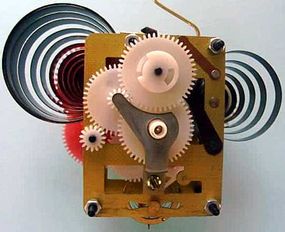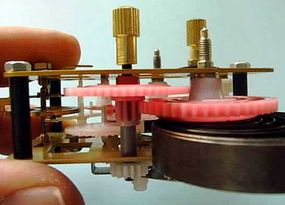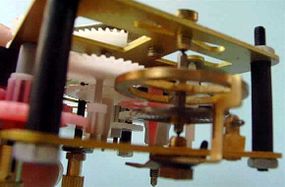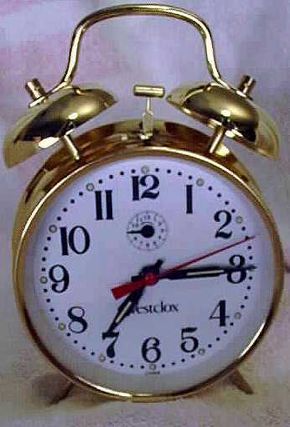Wind-up alarm clocks have been around a long time, but they are still fun to explore. For more information on clocks in general, please see the article titled How Pendulum Clocks Work. Here is the clock we will be exploring today:
Removing the winding knobs and the back of the clock reveals the inside of the clock:
Advertisement

By removing the stand, alarm bells, hands, face and mounting ring, you end up with the clock mechanism itself.

This clock (like most table clocks and wrist watches) uses an oscillating wheel in place of a pendulum. The wheel and its spring are at the bottom. In the picture above, the clock's main spring is on the upper right. The spring on the left is for the alarm, which has its own gear train and escapement.
In the picture below, you see the front of the mechanism. The hands go on the concentric shafts in the center.

Looking at the mechanism from the side shows how all of the different gears fit together.

The following picture shows you the oscillating wheel in the foreground, with gears delivering power to it.

Although this clock looks complicated, there only about a dozen moving parts. There are four gears between the main spring and the escapement wheel. The fourth gear's shaft drives the second hand. There is the escapement wheel, the anchor and the oscillating wheel and spring. There are four gears for the hour hand, minute hand and the alarm hand. There are two gears for the alarm hammer, one of which doubles as an escapement wheel.
Advertisement
